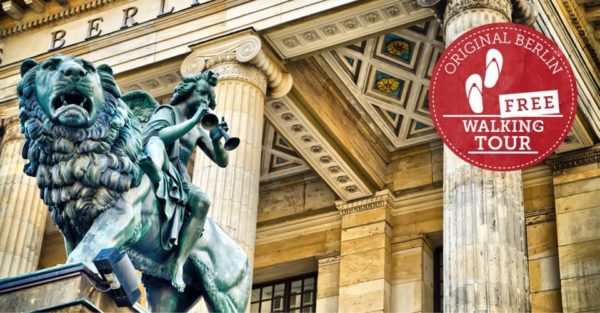The Cold War and the Division of Germany
The Berlin Wall is a significant symbol of the Cold War, a period of heightened tensions and rivalry between the United States and the Soviet Union from the late 1940s to the early 1990s. After World War II, Germany was divided into four occupation zones controlled by the victorious Allied powers: the United States, Soviet Union, Great Britain, and France.
While the Western powers aimed to rebuild a democratic and economically prosperous Germany, the Soviet Union sought to expand its influence over Eastern Europe and establish communist regimes. The ideological and political differences between the two sides soon led to a deeper divide.
Construction and Purpose of the Berlin Wall
In the early morning of August 13, 1961 the construction of the Berlin wall started. The wall was built by East Germany in between East and West Berlin. The stated purpose of the wall was to bar the way for the ‘fascist’ and spies of the West from penetrating into East Germany and disintegrate the socialist structure.
The actual facts were quite different – the construction of the wall was aimed at preventing more and more East Germans from leaving to West Germany and at demonstrating the possession of the Soviet Union on the territory of East Berlin. He explains that before the building of the wall, between 2000-3000 East Germans were leaving to the West each day, and this was creating major problems in the way of the economy and politics for the East German government.
Berlin Wall was high concrete wall with an over head of barbwires, watch towers, and a death strip surrounded by armed guards and dogs. It was some 155 kilometers (96 miles) long, and had many check points where people could be detained or subjected to rigorous scrutiny.
The life before and after the construction of a wall.
West Berlin: Isolated but Thriving
The West Berlin while hemmed in by the wall was a thriving island of freedom during the Cold War period. The western powers led by America heavily subsidized West Berlin and kept it alive with food supplies and a constant military force to prevent such a crisis.
Amazingly West Berlin transformed to a prosperous city full of artists, intellectuals and bohemian lifestyle, being an island in the E.öst bloc. The city transformed into the image of liberalised Western capitalism with shifting fashion scene, vibrant nightlife and blooming arts. West German government devoted lots of cash on basic facilities and the same turns to city to economic powerful zone.
East Berlin: Repression and Surveillance
East Berlin as on the other hand was under the dictatorship of East Germany and Soviet Union. The communist government had cracked down politics by suppressing demonstrations, free speech and also access to information. The opposition was suppressed by the Stasi, the East German secret police, had extensive surveillance and used massive number of informants.
The life there was bleak with shortages of most goods, state owned industries and minimum individual rights. The government restricted the ability to travel, to work, and to access products available for everyday purchase. Shelves of grocery stores were a usual sight and necessity items were a scarce commodity for most of the times.
The Fall of the Berlin Wall
Constant lobbying from within and outside Germany, together with social pressure saw the Berlin wall come down on November 9, 1989. People’s uprising for changes in political system in East Germany, and the decline in power of Soviet Union alongside Glasnost policy by Gorbachov put a lot of press eter on East German regime.
That day, the gates between East, and West Berlin were thrown open and families were reunited, people rejoiced over a united Germany. This event is a historical breakpoint and played the role of the signal of the end of Cold War.
Legacy and Significance
The event that led to the reunification of Germany was the coming down of the Berlin Wall. Thus, on the 3rd of October in 1990 the unification of Eastern and western Germany was formally sealed as one Federal republic of Germany. By tearing the wall, people expressed desire of the end of division not only on social level but also political and, thus, demonstrated that democracy and the spirit of freedom had won the fight.
Some parts of the wall are still erect and several memorials give a vivid account of the human suffering and the politics of the Wall. The Berlin Wall remains a symbol of the triumph of human rights activists who fought for freedom and intolerable of human rights’ violation in the world.
In Conclusion
The Berlin Wall’s construction within the context of the Cold War and its subsequent fall have left an indelible mark on history. The wall not only physically separated families and communities but also symbolized the ideological and political divisions of the Cold War era. Its ultimate demise and the subsequent reunification of Germany remain powerful symbols of hope, resilience, and the triumph of freedom over oppression.
Table of Contents

